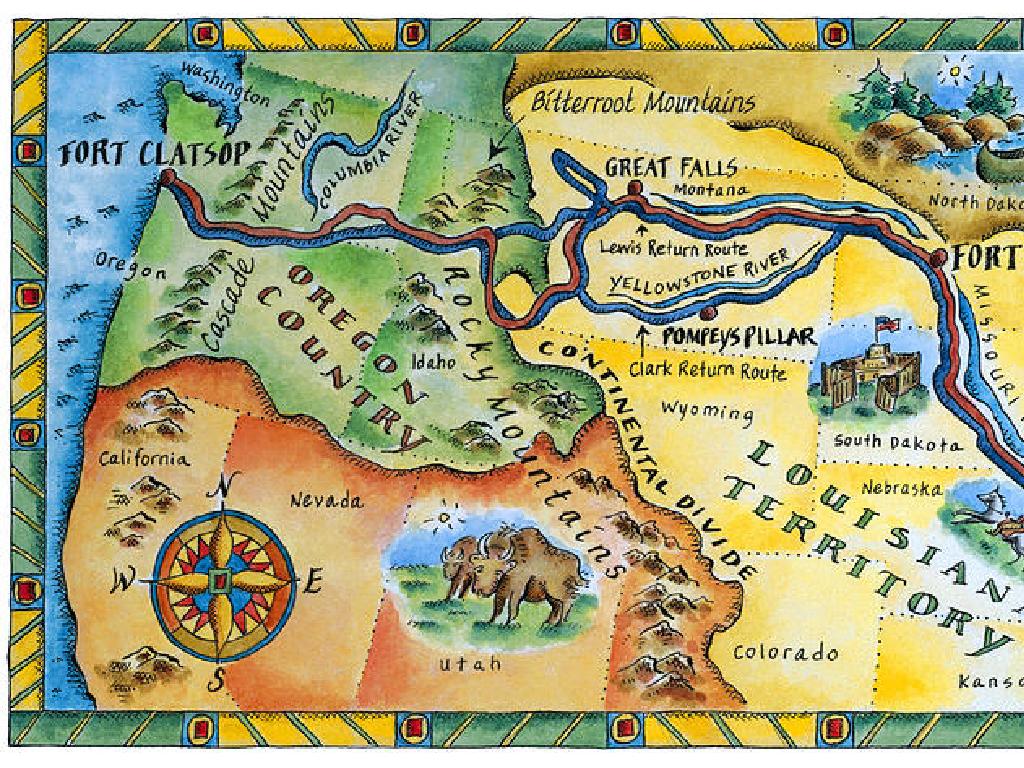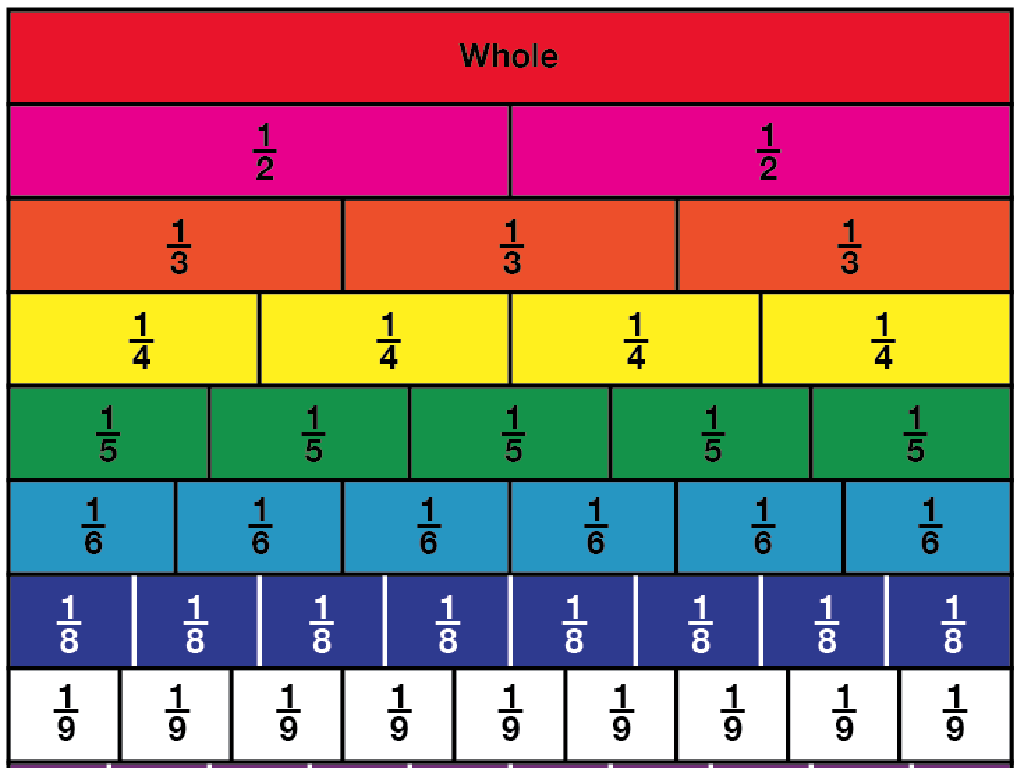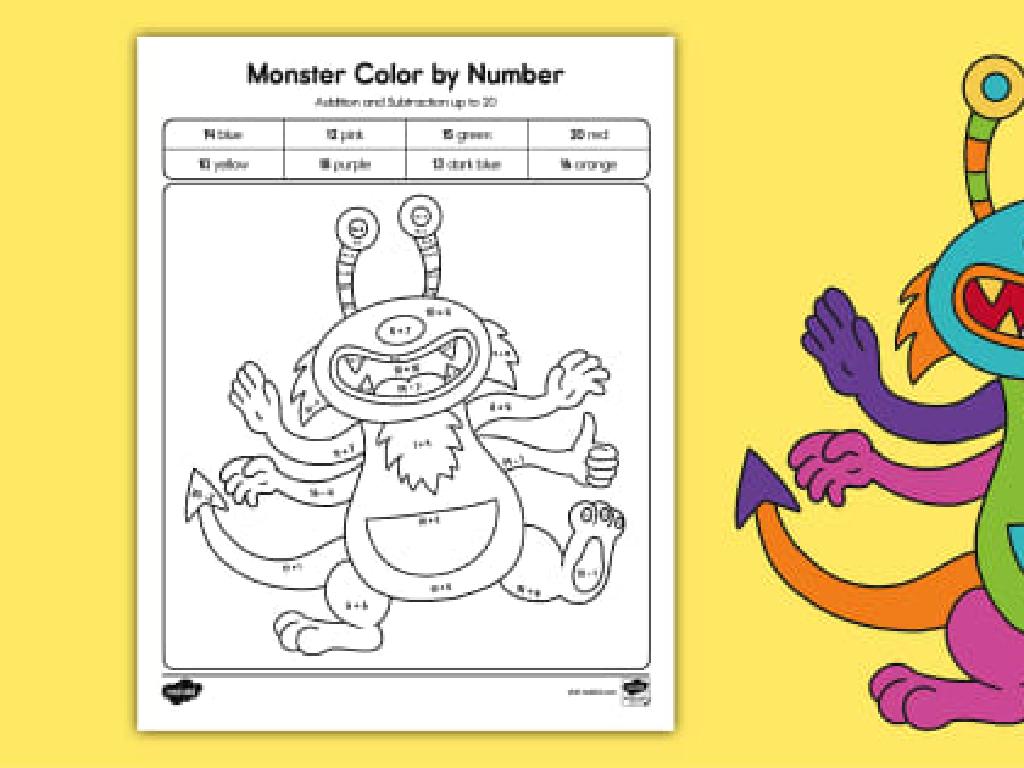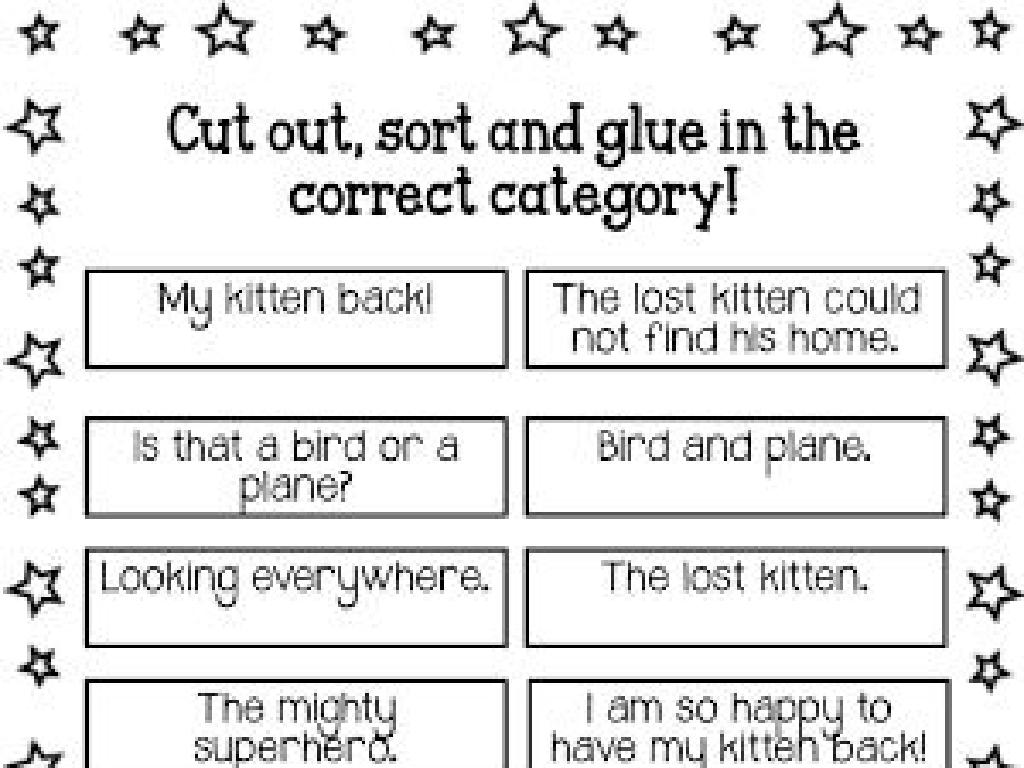Which Source Should You Use?
Subject: Social studies
Grade: Kindergarten
Topic: Using Sources
Please LOG IN to download the presentation. Access is available to registered users only.
View More Content
Exploring Information Sources
– What are sources?
– Sources are where information comes from.
– Types of sources
– Books, people, and the internet can all be sources.
– Why sources matter
– Sources help us learn and understand the world.
– Choosing the right source
– We pick sources based on what we need to know!
|
This slide introduces the concept of sources of information to Kindergarten students. Begin by explaining that a source is where we get information from, like when they ask a parent a question or read a picture book. Discuss different types of sources such as books, people, websites, and videos. Emphasize the importance of sources in learning new things and understanding the world around us. Finally, touch on how to choose the right source for the right information, like looking at a cookbook for a recipe or asking a teacher how to spell a word. Use simple language and relatable examples to ensure the students can grasp the concepts. Encourage the children to think of questions they have and where they can find the answers.
Exploring Different Sources
– Sources can be many things
– Like books, people, or computers!
– Each source has unique info
– Books have stories, people share experiences, computers provide quick facts.
– Sources help us learn
– Choosing the right source
– Ask: Is this source good for learning about animals, space, or history?
|
This slide introduces the concept of sources to Kindergarten students. Begin by explaining that a source is anything that gives us information. Show them examples of different sources such as a book, a person like a teacher or a family member, and a computer or tablet. Discuss how each source can provide different types of information: books can tell stories or facts, people can share what they know or have experienced, and computers can give us quick answers to our questions. Emphasize the importance of choosing the right source depending on what they want to learn about, whether it’s animals, outer space, or historical events. Encourage the students to think about what sources they have used before and what they learned from them.
Choosing the Right Source
– How to pick the best source?
– Think about your questions
– What do you want to learn about?
– Pick sources that are clear
– Choose books or videos that make sense
– Sources should be easy for you
– If it’s too hard, find something simpler
|
This slide is aimed at helping Kindergarten students understand the concept of choosing appropriate sources for information. Start by explaining that a source is where we get information from, like books, people, or videos. Encourage the children to think about what they want to find out and to choose sources that are easy for them to understand. Emphasize that if something is too difficult, it’s okay to ask for help or look for another source. Use examples like choosing a picture book over a text-heavy book or a simple video instead of a complicated article. The goal is to make them feel comfortable seeking information and to understand that clarity is key when selecting a source.
Choosing Good Sources
– Picture books are helpful
– Books with lots of pictures make learning fun and easy!
– Ask teachers and family
– Our teacher and family know a lot; we can learn from them.
– Use computers with adults
– Computers have lots of information, but an adult should be there to guide us.
– Why sources are important
|
This slide is aimed at teaching Kindergarten students about reliable sources of information. Emphasize that books with pictures are not only engaging but also informative, making them excellent learning tools for young students. Encourage children to ask questions and discuss new information with their teachers and family members, as these are trusted sources of knowledge. Highlight the importance of using computers and the internet safely under adult supervision. Explain that good sources help us learn the right things and understand the world better. During the presentation, show examples of picture books and possibly have a family member or teacher share a piece of information as an example.
Activity Time: Source Scavenger Hunt!
– Let’s play a fun game
– Find an information source
– Look for books, pictures, or objects around you
– Decide why it’s a good source
– Think: Does it give us facts? Is it interesting?
– Share with the class
|
This activity is designed to help Kindergarten students understand the concept of sources of information in a fun and interactive way. Encourage the children to explore the classroom and identify items that provide information, such as books, calendars, maps, or computers. Guide them to articulate why they believe their chosen item is a good source of information, focusing on aspects like accuracy, relevance, and how it helps us learn something new. This will help them begin to discern reliable sources in their everyday environment. Facilitate the sharing session, ensuring each child gets a turn to speak and listen to others, fostering communication skills and confidence.
Review and Goodbye: Choosing the Right Source
– What we learned about sources
– Why the right source matters
– Choosing the right source makes learning easier and more fun!
– The best source helps us understand
– Like a puzzle piece that fits just right, the best source clicks with our curiosity.
– Let’s remember our source tips!
– Always ask: Does this help me? Is it easy to understand?
|
As we wrap up today’s lesson, let’s review the key points about using sources. We learned that sources can be books, people, or even the internet, and they provide us with information. It’s important to choose the right source because it makes our learning easier and ensures we understand the topic well. Encourage the children to think about how the source fits with what they want to know, just like choosing the right puzzle piece. Remind them to ask themselves if the source is helpful and easy to understand. This will help them become more independent in their learning journey.





